The Share Zone: Ann Arbor Art Center launches multimedia exhibit "Sharing Space," the first show in its new building
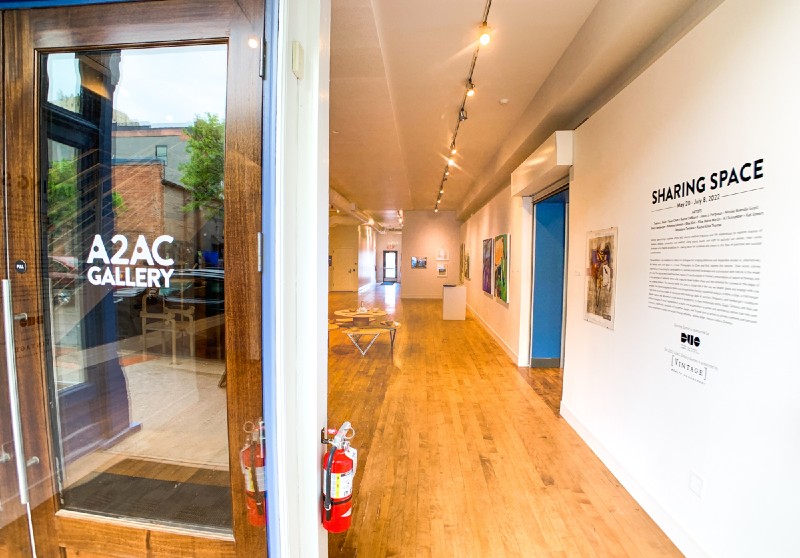
What is space?
Is it the physical area around you?
Is it your mental perceptions of isolation versus intimacy, distance versus closeness? Finding your place in a crowd versus being alone with your thoughts?
Is space the place where we should launch Elon Musk on a Major Tom-like mission to Mars?
The artists in Sharing Space, a new multimedia exhibit at the Ann Arbor Art Gallery (A2AC), ask variations of these questions—except the one about an Elonaut floating around a tin can, that's all on me.
Sharing Space is A2AC's inaugural full exhibit in its newly increased footprint, which came about because the venerable institution bought and expanded into the building next door, reconfiguring nearly everything throughout the three floors of both structures. (MLive did a nice story on the renovation.)
The name Sharing Space is also a nod to a driving idea behind A2AC's newly configured galleries and workspaces. While A2AC has always been about sharing space with the community—the exhibits are free; the paid art classes welcoming to newcomers—its commitment to expanding deeper into the general public is front and center now.
The pandemic has also made us reconsider how and when we share spaces with others. Even though covid variants are still raging everywhere, the world has made the conscious decision to open up again, which means whether or not we're emotionally or physically ready, we have to figure out how to share spaces once again.
"I wanted our first exhibition to be something that spoke to our own process of coming back into the public emerging with our new space," said Interim Gallery Director Ashley Miller.
Feel Good Friday the 13th: UMMA's monthly series offered no bad luck, just great music
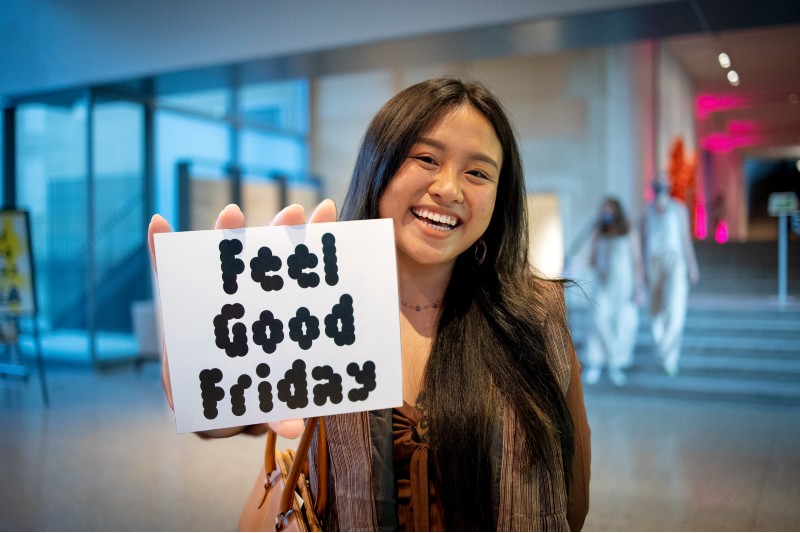
The University of Michigan Museum of Art (UMMA) showed that Friday the 13th doesn’t have to be an unlucky day.
Every second Friday the museum presents a self-described "gathering of art and humans." The May 13 edition of Feel Good Friday featured Detroit- and Ann Arbor-based DJs and artists showcasing experimental film and Detroit techno, along with all the UMMA galleries being open for viewing.
Ann Arbor artists Mark Tucker (FestiFools) and Alvin Hill opened the evening by leading a hands-on workshop to celebrate the opening of FUN, UMMA's latest exhibit, which is in the Stenn gallery facing State Street. It's a space where visitors can contribute to a summer-long creation using materials provided in the gallery.
The up-and-coming Detroit-based DJ AK then took listeners through a musical history of Afrofuturism, spinning ghettotech, dubstep, and deep house in the Lizzie and Jonathan Tisch Apse. The crowd, whose ages ranged from young to old, all got to dancing, whether it was right in front of the speakers or as they took in the UMMA galleries.
Five Minutes of Bravery: The Moth GrandSLAM returned to The Ark after a three-year break
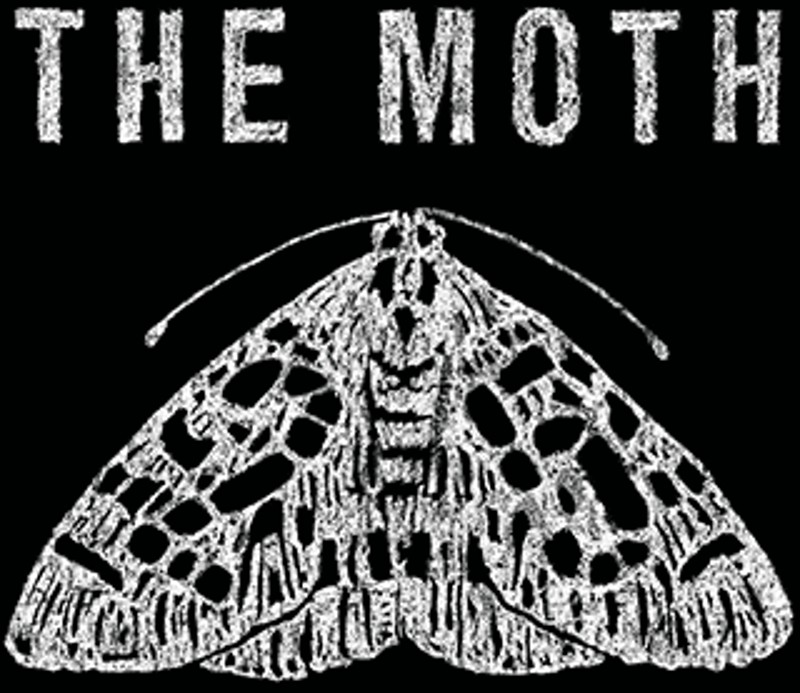
Leaping out of indecision, or into a new love, or over a chicken coop—these were some of the jumps storytellers shared at The Moth’s GrandSLAM championship on May 12 at The Ark in Ann Arbor.
In the first Ann Arbor GrandSLAM since 2019, nine storytellers who were previous winners of the regular StorySLAM events each received five minutes to tell a true personal story, without any notes to guide them. Three groups of judges—naming themselves Quantum, The 229s, and The Bullfrogs—secretly rated each story, not even revealing the scores after a winner was determined. Amir Badghdadchi, a past GrandSLAM winner, was the host and kept the energy high.
With this year's theme being "leaps," the GrandSLAM invited the audience to listen to "stories of springing into action, clearing hurdles, impulsive decisions or concentrating everything they have on a single bound. In short: busting a move."
Wherever You Are: Geoff Sobelle’s experimental theater piece explores what it means to be "Home"

Among the many, many things that have changed over the last two years is our sense of “home.”
While traditionally associated with comfort and family and love, our homes became claustrophobic prisons of a kind during the pandemic as we holed up to protect ourselves and each other; and though home provided many of us with some semblance of safety, we were nonetheless terrified of being with others and of this dangerous thing that was out in the world that we didn’t yet understand.
So although the UMS presentation of Geoff Sobelle’s Home—a genre-defying hybrid of theater, dance, and interactive performance art that often has the feel of a live silent film—had been originally scheduled for April 2020, seeing it instead this past weekend during its two-day run at the Power Center inevitably meant the audience watched it with COVID-era eyes.
That’s not to say we collectively arrived at the venue with a jaundiced, wary perception filter firmly in place. But for many of us, the abstract idea of “home” as an emotional palette has expanded to include some darker hues, right alongside the more conventionally bright, cozy, warm ones.
(Not Quite) A MoodSwing Reunion: Jazz all-stars electrify Hill Auditorium despite missing a key member
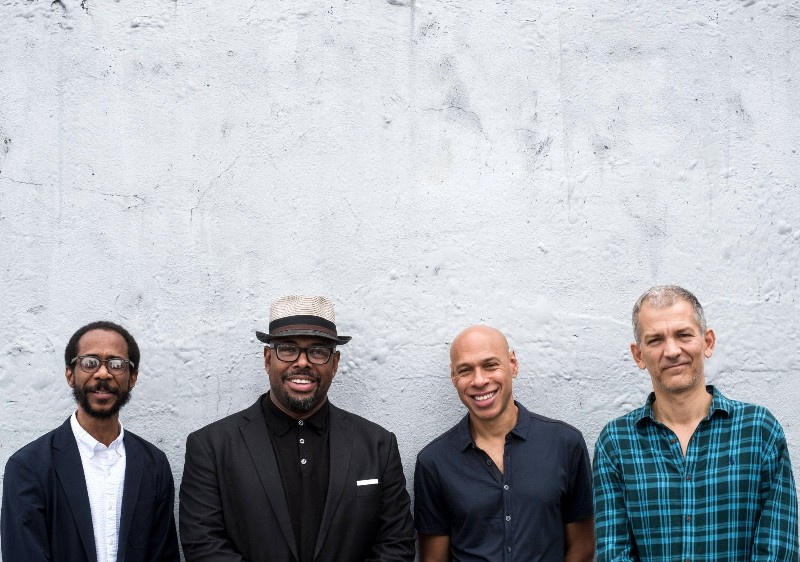
Joshua Redman comes across as surprisingly shy for one of the best saxophonists in the world. Instrument held slightly off to the side, he addressed the immense crowd at Hill Auditorium on Thursday night from behind his reading glasses and with an endearing timidity, almost apologetically searching for the right words as he gave titles for the night’s first two pieces and introduced his band. Never once did he betray even a hint of the fact that a minute before he’d delivered the kind of virtuosic performance only a handful of people in the world could give.
The saxophonist and composer was joined onstage by talents no less ferocious than his own, almost a full reunion of the Joshua Redman Quartet lineup from the ‘90s. Bassist Christian McBride and drummer Brian Blade—Grammy winners both—grounded the ensemble as its rhythm section throughout the night, occasionally breaking out for breathtaking solos, and the only absence from the old days was pianist Brad Mehldau, who was originally slated to appear but called in sick at the last minute.
Encore Theatre premieres a new musical based on the life of silent star Lon Chaney

In addition to presenting classic American musicals and lively cabaret shows, The Encore Theatre in Dexter is also doing its part to expand the musical theater repertoire with premiere presentations of new musicals.
This month, Encore is presenting the world premiere of A Thousand Faces, a musical bio on the life of silent-screen star Lon Chaney.
As with any new theatrical production, the first presentation is an opportunity for the creative team to make adjustments and test run the audience's response to the new material. The book writer, the composer, the lyricist, and the director will tweak this show as the weeks go on.
They’re off to a good start but audiences might be a bit surprised by the show’s approach to telling the Chaney family story.
Along with the great silent comedy stars, Lon Chaney's name and films still resonate with audiences. He was the man of a thousand faces. He was an actor who hid himself in characters that were both physically and psychologically damaged. Chaney was famous for his performances in The Hunchback of Notre Dame, The Phantom of the Opera, The Unholy Three, Laugh, Clown, and He Who Gets Slapped. He did his own shock-producing makeup and twisted his face and body into a dozen different contortions. But he could also show his own face and give a tough performance in the contemporary war drama Tell It to the Marines.
After a scene of Chaney adjusting his Quasimodo makeup and trying on tortured facial expressions, A Thousand Faces takes us back to Chaney’s youth, because this isn’t a story about making horror movies, it’s about family.
Tracey Snelling's "How to Build a Disaster Proof House" constructions contemplate displacement and disenfranchisement
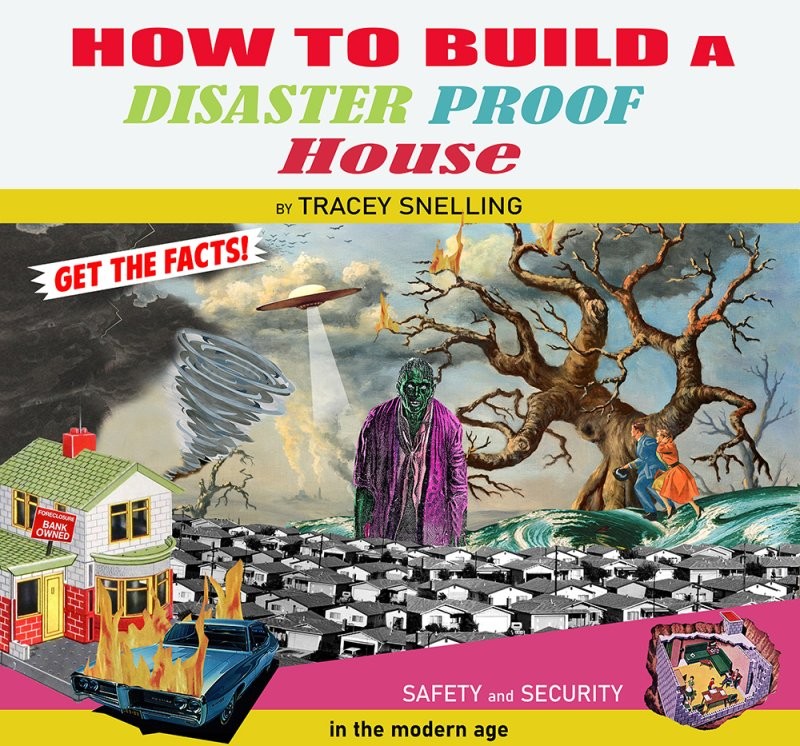
A vibrant installation at LSA’s Institute for the Humanities Gallery asks viewers to contemplate the utility (or lack thereof) of building a “disaster proof house.”
Tracey Snelling, the current Roman Witt Artist in Residence at the gallery, returns to LSA after previously exhibiting Here and There in 2017, which addressed “challenges of economic inequities, racial biases, and imposed class divisions that often limit the options available to so many people.” Her new exhibit, How to Build a Disaster Proof House, curated by LSA's Amanda Krugliak, “contemplates the uncertainty, displacement, and disenfranchisement that frames the present day” and asks, “How do we find a safe place, protected from bad weather and circumstance, in an era of floods, fires, violence, abuse and pandemics?”
Antoinette Chinonye Nwandu’s “Pass Over” is a Black Lives Matter-era translation of Exodus and "Waiting for Godot"

The time is ripe for Antoinette Chinonye Nwandu’s Pass Over, now on stage at Theatre Nova.
The play was the show that officially reopened Broadway last August; we’re fast approaching the holiday of the same name, which commemorates the Jews’ emancipation from slavery in Egypt; and given the reignited culture wars of this mid-term election year—fueled in part by debate about critical race theory—Nwandu’s powerful reimagining of Beckett’s Waiting for Godot, with two young Black men in the lead roles, feels like the theatrical version of lightning in a bottle.
Pass Over (run time 80 minutes) focuses Moses (Justin Montgomery) and Kitch (Dan Johnson), who live a hardscrabble Groundhog Day-like existence on a heavily policed city block. They regularly perform rituals like a secret handshake; Moses says “Kill me now” when he wakes up each morning, and Kitch replies, “Bang bang”; and they each name wished-for items on their “Promised Land Top Ten” lists.
But even as the men speak and dream of escape—using language so rife with curses and the n-word that it soon feels more centered on sound and music than meaning—they’re not going anywhere; and a streetlight pole that looms like Vladimir and Estragon’s tree, in this new context, haunts the play’s action with the ominous suggestion of lynching. Building on this idea, a cartoonishly obsequious, lost, “golly gee” white man (Kevin O’Callaghan) enters the scene, wearing a light-colored suit and carrying a picnic basket full of food for his mother; and a racist, violent white cop called Ossifer (also played by O’Callaghan) appears now and then to keep Moses and Kitch in their place, both literally and figuratively.
Penny Seats Theatre Company's "The Actors" is a comedic and emotional look at processing parental loss

Early in Ronnie Larsen’s play The Actors—staged by the Penny Seats Theatre Company at the Stone Chalet Event Center in Ann Arbor—a character says, “Theater’s weird. Families are weird.”
Ronnie, the comedic drama’s main character (who notably shares the playwright’s name, and is affectingly played by Brandy Joe Plambeck), voices this idea while explaining why he’s looking to hire a man and a woman to spend a few hours a week in his apartment, playing the roles of his deceased parents. He's lonely and has decided to use his inheritance money to hire actors that might make him feel cared for and connected again. Ronnie provides a family history and specific, remembered scenes for the actors to play out, inviting them to improvise.
Inevitably, though, things go hilariously off-the-rails, as the boundaries between reality and pretend get increasingly fuzzy. Ronnie’s stand-in father Clarence (Robert Schorr) and mother Jean (Diane Hill) develop an attraction for each other; Clarence moves in, after being kicked out of his real home; and Jean’s real grown son (David Collins) inserts himself as Ronnie’s pretend older brother Jay, which makes the real Jay’s (Jeffrey Miller) unannounced visit all the more painfully awkward. But Jay’s arrival also brings new information to light that throws Ronnie’s family memories, and motives, into question.
60th Ann Arbor Film Festival: Two lost souls swimming in a fishbowl—another look at "Looking for Horses"

Stefan Pavlović's Looking for Horses is a glimpse into the real-life story of an unlikely friendship.
A fisherman named Zdravko was in the Bosnian War in the first half of the '90s and sacrificed his youth as a soldier. A grenade left him severely hearing impaired and another accident took his right eye. Director Pavlović grew up in Bosnia and was exposed to four languages, but he suffers from stuttering in his mother tongue Serbocroatian, which he understands imperfectly. The two friends are of different generations and temperaments and communicate in sometimes halting speech. Pavlović’s patient listening often allows Zdravko the opportunity to talk at length, reflecting on life and fishing strategies.
Zdravko spends his days on a lake in a small motorboat while Pavlović films him. We see the island church, now abandoned, where Zdravko lived for several years, surviving through the cold in a small sheltered room. Pavlović has joined him for his fishing adventures motivated by something else that remains hidden from us.
So many unanswered questions arise. How did Stefan and Zdravko meet? How does Zdravko live? (For all the time spent on the boat fishing, we never see him catch anything.) What do they each get out of their friendship?
But that’s not really the point.
If we knew the answers, would it change anything?


































